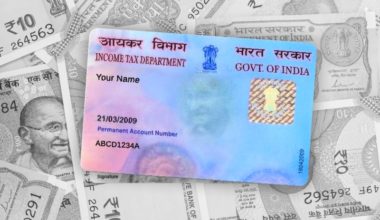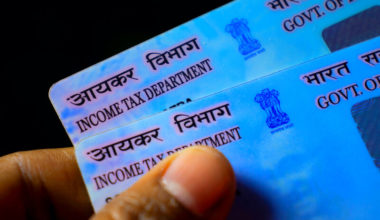PAN, TAN, and TIN are all documents that serve different functions. PAN stands for Permanent Account Number, TAN stands for Tax Deduction and Collection Account Number, and TIN stands for Taxpayer Identification Number.
Table of Contents Show
PAN, TAN, and TIN are important documents that must be submitted for a variety of reasons, including filing income tax returns, deducting or collecting taxes, trading, and so on. If a person fails to apply for a PAN, TAN, or TIN or fails to comply with the card-based provisions, he or she is subject to a penalty.
Furthermore, these documents – PAN, TAN, TIN – should be clearly quoted wherever they are required. Besides, it is important to understand that they cannot be substituted for one another.
In this blog, we will discuss PAN, TAN, and TIN in detail, as well as the differences between them.
Detailed Comparison Between PAN, TAN, TIN
| Parameters | PAN | TAN | TIN |
|---|---|---|---|
| Issuing Agency | Income Tax Department | Income Tax Department | Commercial Tax Department of Respective State |
| Code | 10-digit Alphanumeric number | 10-digit Alphanumeric number | 11-digit code |
| Purpose | Used for financial transactions Acts as a proof of identity Used for buying/selling or property, car etc | Used for deduction and collection of Tax | Track VAT-related activities |
| Who should have it | Taxpayers/ Non-Taxpayers Foreign nationals Foreign Entities | People who deduct or collects tax under section 203 A | Dealers, exporters, traders |
| Laws | Section 139A of the Income Tax Act of 1961 | Section 203A of the Income Tax Act of 1961 | Different States have Different Laws |
| Penalty | Rs. 10,000 | Rs. 10,000 | Penalty differs as per the states |
| Forms to fill | Form 49A for Indian Citizens Form 49AA for Foreign Nationals | Form 49B | Forms vary as per the States |
| Number of Cards | 1 | 1 | 1 |
What is a TIN or Tax Identification Number?
Unlike PAN and TAN cards, TIN is an 11-digit unique number issued by the respective Indian states’ Commercial Tax Department. It can be further explained as follows:
- An identification number issued to businesses to track their transactions
- A document which is required by all the businesses that are registered under VAT
- TIN is used whenever goods or services are sold within a state or between two or more states
- It is the modern method of collecting, processing, monitoring, and accounting for direct taxes
- The TIN must be quoted for all VAT transactions
Who Requires a TIN?
Following is the list of people who require a TIN-
- Traders
- Exporters
- Dealers
- Manufacturers
What are the Documents Required for a TIN?
The given below documents might vary from state to state-
- Address proof
- ID proof
- PAN card
- 6 passport size photographs
- Address proof of the business premises
- Purchase invoice, copy of GR & Payment/LR, collection proof with bank statement
An 11-digit acknowledgement number is generated for the applicant once all documents have been submitted and verified. The number can also be used to check the status of the TIN.
Note: It is recommended that you contact the TIN official to get a better understanding of the documents that must be submitted.
What is TAN or Tax Deduction and Collection Account Number?
The Tax Deduction and Collection Account Number, abbreviated as TAN, is a 10-digit alphanumeric number. It is made available to those who deduct or collect taxes under Section 203A of the Indian Income Tax Act of 1961.
TAN can be further defined by the following points:
- TAN is important for TDS returns, payments and challans
- Anyone who fails to apply for a TAN card will have to pay an Rs. 10,000 tax
- Once the TAN has been obtained, businesses must file TDS quarterly
Who Requires a TAN Number?
A TAN number is required by the following-
- Central/State Government/Local Authorities
- Company
- Branch/Division of a Company
- Individual business’s branches
- Firm /Association of Persons/Trusts
- Individual/HUFs
How to Apply for a TAN?
An applicant can apply for a TAN both online and in person. When applying online, an applicant must first log in to the official NSDL website and complete the application form. Following the submission of the application, the applicant will be assigned a 14-digit acknowledgement number. The acknowledgement number, along with supporting documents and a fee, must be submitted to the NSDL office. To apply for a TAN offline, an applicant must visit an NSDL centre and submit the TAN application form, all required documents, and a fee.
Note: An applicant cannot apply for another TAN card as it is illegal to hold 2 TAN cards.
What is a PAN Card?
PAN, or Permanent Account Number, is a 10-digit alphanumeric number issued to all taxpayers and non-taxpayers in the country. It is also issued to foreigners and foreign entities under certain conditions. A PAN can be further defined as follows:
- The PAN is required for all financial transactions
- It acts as an identity proof of the individual
- It is used for income tax purposes
- A PAN is also used for selling or buying property, cars, or other similar assets
Who Should Apply for a PAN Card?
The following can apply for a PAN card:
- Individuals with a taxable income
- Foreign nationals
- Foreign entities
- Students, non-taxpayers
How to Apply for a PAN Card?
A PAN card can be obtained by visiting the NSDL or UTIITSL official websites. Both sites provide two PAN application forms. Form 49A is intended for Indian citizens, whereas Form 49AA is intended for foreign nationals. An applicant may also apply for a PAN card in person. He/she must complete the form by logging into the NSDL’s official website and following the instructions there.
What are the Documents Required for a PAN Card?
A list of documents are required when applying for a PAN card-
| Proof of Address | Proof of Identity |
|---|---|
| Driving License | Passport |
| AADHAR Card | AADHAR Card |
| Post office passbook | Photo ID Card |
| Passport | Voter ID card |
| Voter ID card | Ration Card |
| Property Tax assessment order | Driving License |
| Domicile certificate | Bank certificate |
| Letter of allotment issued by the state or central government | Government Health Scheme Card, Pensioner Card, Arm’s License, Central |
| Bank account statement, Landline bill, water bill, gas connection card, credit card statement, electricity bill (not over 3 months) | Certificate of Identity (Signed by Member of Parliament/Municipal Councilor/Member of Legislative Assembly |








